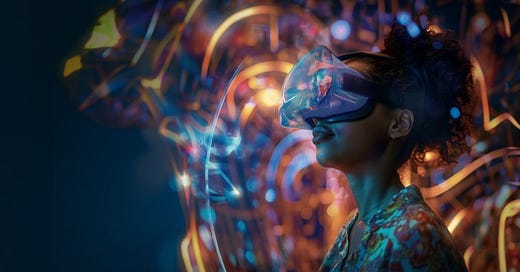AR in Healthcare: Enhancing Precision, Efficiency, and Access
Healthcare Reimagined: The AR Advantage
Augmented Reality (AR) is making significant strides in healthcare, transforming how medical professionals interact with patients and medical data. By overlaying digital information onto the real-world environment, AR is revolutionizing diagnostic procedures, surgeries, and training methods, offering unparalleled benefits in precision, efficiency, and access to healthcare services.
Precision in Diagnosis and Treatment
One of the most compelling advantages of AR in healthcare is its ability to enhance precision during diagnostic processes and treatment planning. AR technology can superimpose vital information, such as 3D images of organs, onto the patient's body, allowing physicians to see a more accurate representation of the anatomy. This enables them to identify issues such as tumors, fractures, or irregularities with greater accuracy, helping in early detection and targeted treatment.
For surgeons, AR provides a layer of real-time, navigational guidance during surgeries. With the help of AR, surgeons can view the internal structures of the patient without making large incisions or relying on external imaging tools. This improves the precision of procedures like minimally invasive surgery, reducing errors, and minimizing recovery time for patients.
Efficiency in Healthcare Processes
AR contributes to the efficiency of healthcare by streamlining processes that traditionally take time and require a lot of manual work. One key example is the use of AR in medical training and education. By using AR simulations, medical students can practice complex surgeries or diagnostic techniques in a virtual environment before performing them on patients. This reduces the need for costly and time-consuming traditional training methods and helps ensure that medical practitioners are well-prepared for real-life procedures.
In terms of patient care, AR can assist healthcare professionals by displaying real-time patient information during examinations. By overlaying data such as vital signs, medical history, or lab results, AR helps doctors make faster, more informed decisions, improving patient outcomes.
Boron-Infused Diamonds: A Quantum Revolution
Diamonds, known for their extraordinary hardness, unparalleled brilliance, and their use in various industrial and jewelry applications, have captivated human imagination for centuries. However, an emerging innovation in the realm of materials science and quantum computing is poised to take diamonds to new heights: boron-infused diamonds. These speciall…
Access to Healthcare
AR also plays a significant role in expanding healthcare access, particularly in remote or underserved areas. With the integration of AR, telemedicine has become more dynamic, enabling healthcare professionals to collaborate and assist in real-time consultations with patients, even from distant locations. For patients in rural or isolated areas, this technology allows them to receive expert care without traveling long distances, reducing healthcare disparities.
Conclusion
The integration of AR in healthcare is ushering in a new era of precision, efficiency, and accessibility. By improving diagnostic accuracy, enhancing surgical outcomes, streamlining training, and expanding access to care, AR holds immense promise for reshaping the future of healthcare. As technology continues to evolve, it is likely that AR will become a standard tool in the healthcare industry, providing better outcomes for both patients and professionals alike.
FAQ
Q: What is AR in healthcare? A: Augmented Reality (AR) in healthcare involves the use of digital technology to overlay virtual information onto the real-world environment. This helps healthcare providers visualize complex medical data, improving diagnosis, treatment, and surgical precision.
Q: How does AR improve precision in surgery? A: AR provides real-time, 3D visualizations of a patient’s internal anatomy during surgery, allowing surgeons to navigate complex structures with enhanced accuracy. This results in fewer errors, quicker procedures, and less invasive surgeries.
Q: Can AR assist in medical training? A: Yes, AR helps medical professionals practice procedures in a virtual environment. This enhances their skills and understanding before performing them on real patients, reducing errors and improving readiness.
Q: How does AR improve access to healthcare? A: AR supports telemedicine by enabling healthcare professionals to remotely assist and consult with patients, particularly in rural or underserved regions, ensuring that quality care is more widely accessible.





